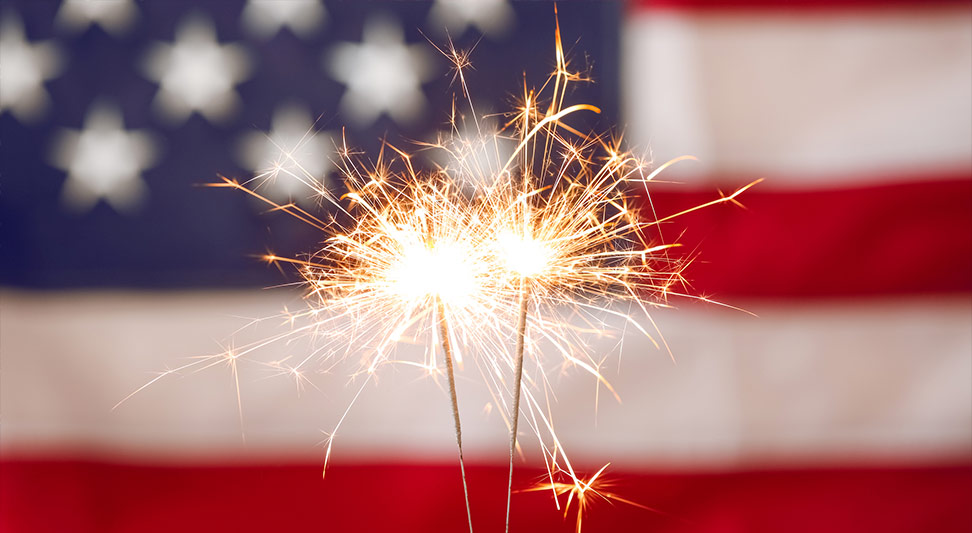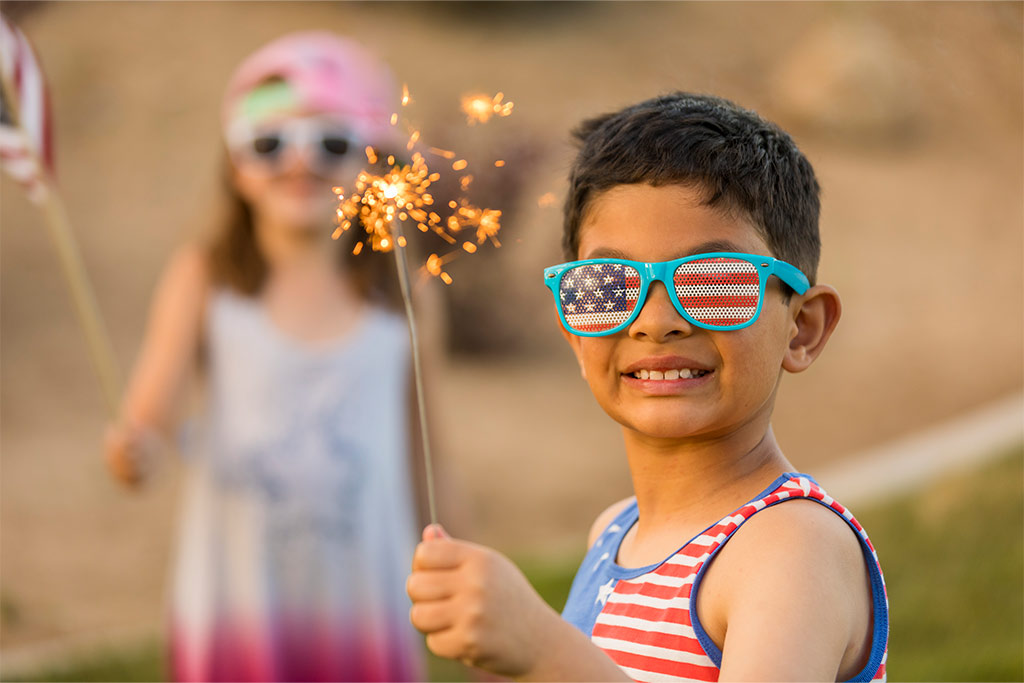Summer is here, and Independence Day is just around the corner. Your 4th of July holiday usually ends with enjoying professional fireworks and maybe even lighting a few of your own in the backyard. June is Fireworks Eye Safety Month, so before you light your first bottle rocket or sparkler, let’s talk about the dangers of fireworks and how to keep you and your loved ones safe.
Fireworks 101
Let’s be honest—fireworks, for the most part, are explosives. Backyard rockets have an aerial shell filled with gunpowder and small globules of other explosive compounds called stars. Another smaller layer of gunpowder sits under the shell with a fuse attached to it. Once ignited, this black powder propels the shell into the air, where the materials produce light, sound, and color.
Even the tamest of these store-bought fireworks burn extremely hot. We all have memories of holding sparklers in our hands as kids—but those sparklers can reach a whopping 2,000 degrees.
The most common fireworks purchased for personal use are:
- Sparklers
- Bottle rockets
- TNT poppers
- Roman candles
- Snakes
- M-80s
- Artillery shells
- Parachutes
From small cracking noises to huge displays in the sky, each firework product comes with its own inherent risk.
Firework Injuries
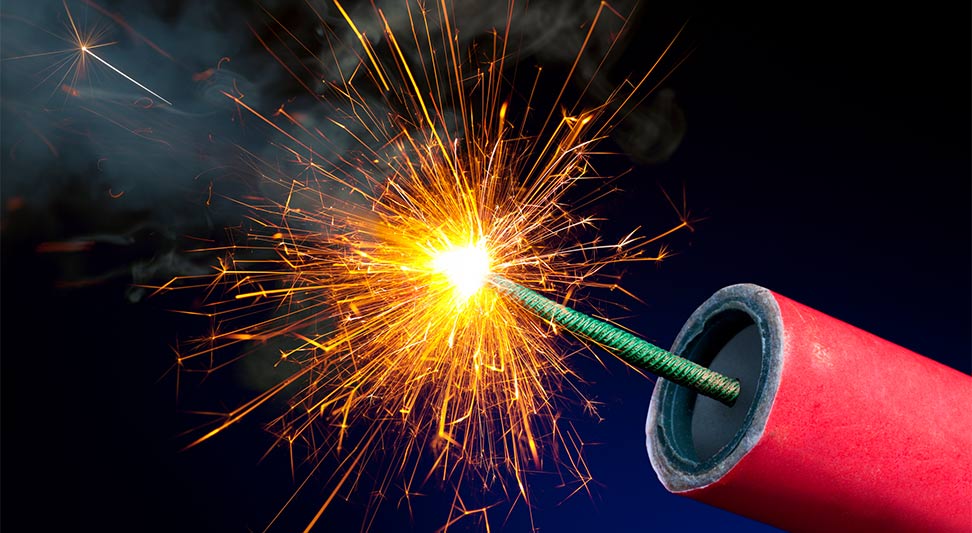
Most firework injuries happen in a one-month span from late June to late July. In 2020, approximately 15,600 people visited an emergency room because of a fireworks-related injury, and there were 18 deaths. The number of people sustaining minor injuries not requiring an ER visit is thought to be much higher.
The most common injuries are to the:
- Hands and fingers (30%)
- Legs (23%)
- Head, face, and ears (16%)
- Eyes (15%)
- Arms (10%)
- Torso and other areas (6%)
Small Doesn’t Equal Safe
Sometimes people pick up packs of fireworks at the grocery store thinking they’re safe because they’re small and don’t produce large displays. Often, these are the fireworks we give or use close to children. Consider the number of ER trips these common, “safer” fireworks cause:
- Sparklers – 900 ER visits
- Firecrackers – 800 ER visits
- Bottle rockets – 400 ER visits
Just Watching Can Be Dangerous
Many of us think the people most at risk of getting injured are those lighting the fuse, but bystanders are the most at risk. Those on the sidelines account for 65% of all ER visits for firework-related injuries.
Eye Injuries
Your eyes are delicate, and any fireworks injury could potentially cause permanent damage. Sparks, flames, smoke, and flying pieces of debris are all hazards inherent in any display. The four most common eye injuries are:
- Detached retina
- Scratches on the cornea
- Ruptured eyeball
- Burns
Any eye injury can lead to long-term vision problems or even blindness. If your eye has been hurt, be on the lookout for these symptoms:
- Immediate or ongoing pain in and around the eye
- Blurry, spotty or impaired vision
- Cut or bruised eyelid
- Reduced movement of one or both eyes
- Bulging eye
- Unusual or distorted pupil size or shape
- Visible blood in your eye
- Any foreign object that blinking or tears don’t remove
If you experience any of these symptoms, seek medical attention right away.
DOs and DON’Ts for Fireworks Eye Injuries
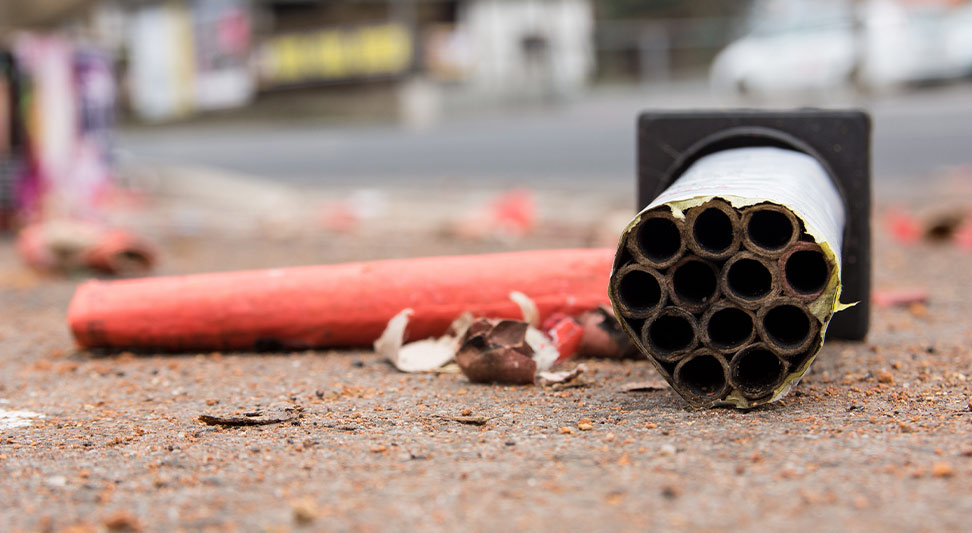
Different injuries call for different types of care. If a firework has injured your eye, our first piece of advice is to go to an ER or call your doctor immediately. If you don’t have an eye doctor, you can find an nJoy Vision preferred eye doctor in your area.
If you get something in your eye
DON’T:
- Rub your eye
- Apply pressure
- Touch your eyeball
DO:
- Blink several times, allowing tears to flush your eye
- Rinse your eye with saline, eyewash, or running water
- Gently lift the upper lid over the lower lid so the lashes can brush out the particle
Seek medical attention if none of these gentle methods get the particle out or if you still feel like something is still in your eye after you’ve removed the material.
If you get hit on or near the eye
DON’T:
- Apply pressure
- Rub your eye
- Put a steak or any other frozen food item to your eye (they could introduce bacteria)
DO:
- Gently apply a cold compress
If you develop discoloration in or around the eye or have disrupted vision or pain, seek medical attention—even if the impact was light. Any blow to the eye could cause significant damage like a detached retina.
If your eye is cut or punctured
DON’T:
- Rub your eye
- Apply pressure
- Remove any objects from the eye or eyelid
- Take aspirin or ibuprofen—these can increase bleeding
DO:
- Gently secure a protective cover over your eye. The bottom of a paper cup taped to your face will suffice.
- Seek medical attention right away. Cuts and punctures require a trip to the ER.
If your eye is burned
DON’T:
- Touch or rub your eye
- Apply pressure
- Apply ointment or medicine of any kind
DO:
- Immediately flush the eye with clean, cool water
Any burn requires immediate, emergency medical attention.
Prevention and Protection
There are safe ways to enjoy the 4th of July holiday. Attending a professional show is the safest way to experience fireworks, but with a few recommendations:
- Position yourself at least 500 feet away from the point of ignition.
- Follow all safety instructions.
- Stay behind safety barriers.
Personal Fireworks Safety
If you decide to purchase and ignite your own fireworks, following these best practices can reduce the chance of serious injury to your eyes:
- Keep all fireworks out of the reach of children, including sparklers.
- Never run or play around fireworks.
- Keep a bucket of water nearby to extinguish each item.
- Never light a firework in a container of any kind.
- Wear approved safety glasses if you’re igniting or observing any at-home fireworks.
- Stay as far away as possible when observing.
Fireworks Displays In & Around OKC
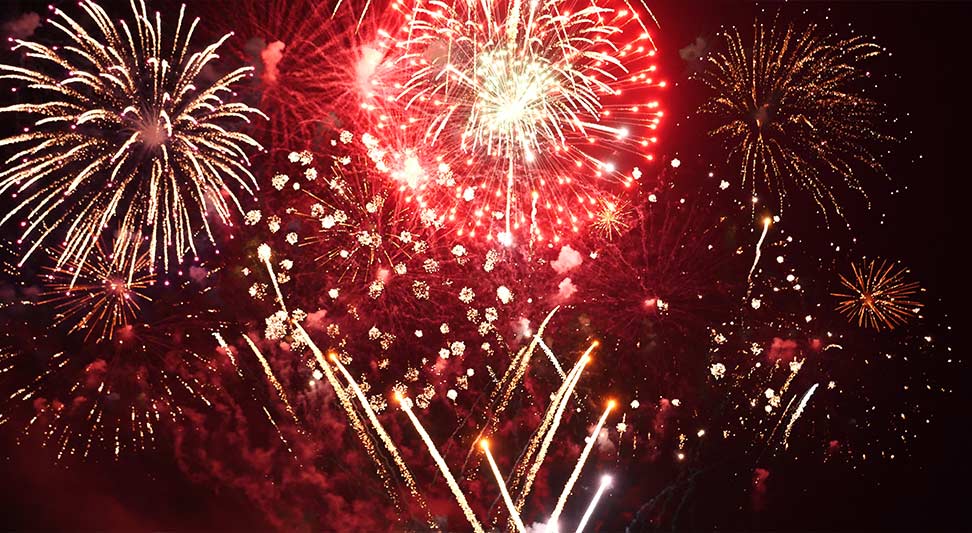
Be sure to check each event’s page or website for complete details and times.
June 25
- Mustang Firefighters Freedom Celebration at Wild Horse Park (1201 N Mustang Rd, Mustang). 6:30-10:30pm. FREE
- Stars & Stripes Regatta at Riversport (800 Riversport Dr). 8am-10pm (fireworks at dusk). FREE
June 26
- Freedom Fest at Community Church (512 E Seward Rd, Guthrie). 5-10pm. FREE
July 1
- Purcell Independence Day Celebration at Purcell City Lake (1400 Chandler Rd, Purcell). 5-10pm (fireworks at 9:45pm). FREE
- Bixby Freedom Celebration at the Bentley Park Sports Complex (7673 E 121st St S, Bixby). 7-10pm (fireworks at 9:45pm). FREE
July 2
- Blanchard Independence Celebration (10th & HWY 62, Blanchard). 6-10pm. FREE
- Stars & Stripes Block Party at Riversport (800 Riversport Dr). 9am-10pm (fireworks at dusk).
- Bethany Freedom Fest at SNU, Downtown Bethany, and Eldon Lyon Park. 10am-10pm (fireworks at 9:55pm). FREE
- Lawton Fort Sill Freedom Festival at Elmer Thoma Park (NW 3rd & NW Ferris Ave.) 8:45am-10:30pm (fireworks at 9:30pm). FREE
- Liberty Fireworks Bash in Nicoma Park (2540 Liberty Blvd, Nicoma Park). Noon-10:45pm (fireworks at 10pm). FREE
July 2-4
- Frontier City July 4th Fest (11501 N I-35 Service Rd). Nightly at 9:40pm. Park admission is required.
July 3
- Family Freedom Fest at The Bridge Church (1116 W State HWY 152, Mustang). 6-10pm (fireworks at 9:30pm). FREE
- Tuttle Independence Day Fireworks Show (W Main St, Tuttle). 9:30pm. FREE
July 3 & 4
- Yukon Freedom Fest at Chisholm Trail Park (500 W Vandament, Yukon) & Yukon City Park (2200 S Holly, Yukon). July 3 – 5-10pm (fireworks at 10pm); July 4 – 8am-10pm (fireworks at 10pm). FREE
July 4
- Choctaw Independence Day Celebration at Choctaw Creek Park (2001 N Harper Rd, Choctaw). 11am-10:30pm (fireworks at 9:45pm). FREE
- Moore’s Celebration in the Heartland at Buck Thomas Park (1903 NE 12th St, Moore). 2pm-10pm (fireworks at (9:45pm). FREE
- Norman’s Fourth Fest at Reaves Park (2501 Jenkins Ave, Norman). 5-10:30pm (fireworks at 9:45pm). FREE
- Midwest City’s Tribute to Liberty at Joe B. Barnes Regional Park (8700 E Reno Ave, Midwest City). 6-10pm (fireworks at 9:45pm) FREE
- Piedmont Freedom Festival on Piedmont Road (713 N Piedmont Rd, Piedmont). 5pm-Dark (fireworks at dusk). FREE
- OKC Dodgers vs Las Vegas Aviators at the Chickasaw Bricktown Ballpark (1 Mickey Mantle Dr). 7:05pm (fireworks following the game). Tickets to the game are required.
- Edmond LibertyFest Fireworks at Hafer Park (1034 S. Bryant). 9:30pm. FREE
Safely Enjoy Your Holiday
The sound of firecrackers and the glow of sparklers have become a tradition for many families across the country. Be prepared by practicing safe handling and viewing of fireworks.
By following our guidelines and best practices, you can feel confident you’re doing all you can to keep everyone safe while celebrating this festive summer holiday.
Happy 4th of July!
